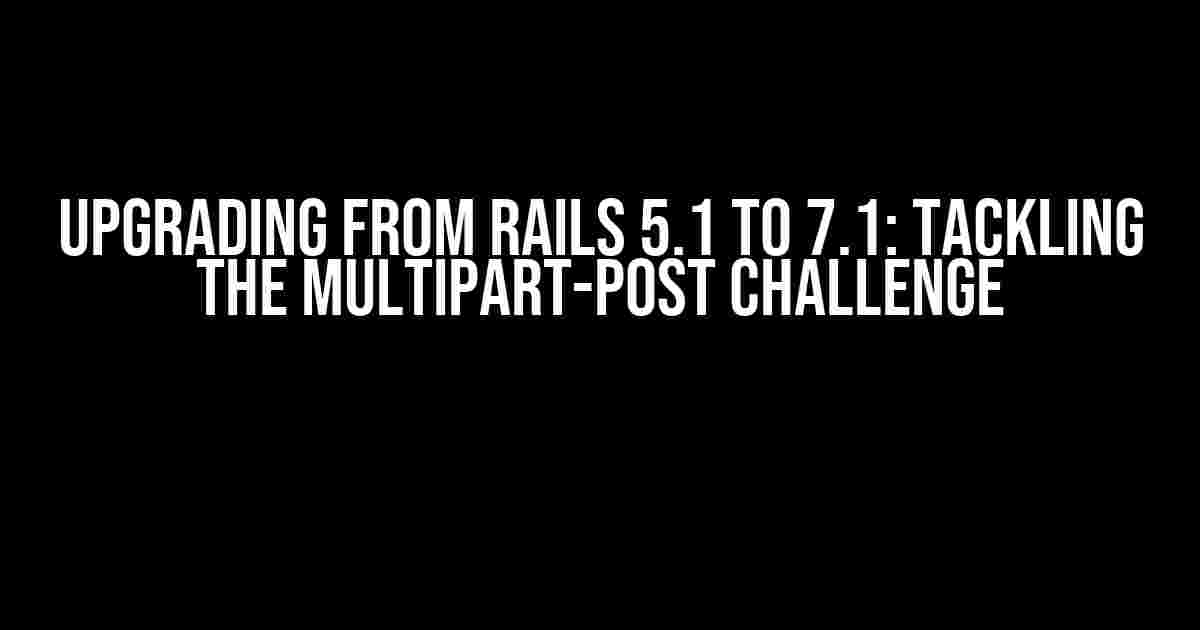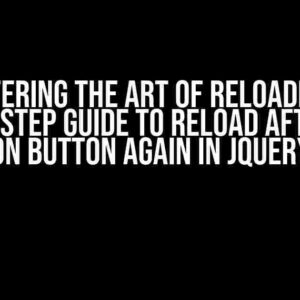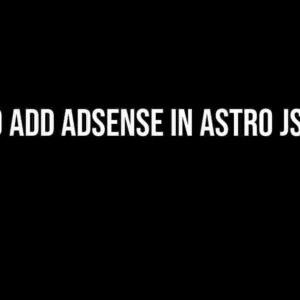Are you ready to take the leap and upgrade your Rails application from 5.1 to 7.1? Congratulations on taking this significant step towards modernizing your app! However, beware of the pitfalls that lie ahead, particularly when it comes to handling multipart-posts. In this article, we’ll dive into the world of multipart-posts, explore the changes introduced in Rails 7.1, and provide you with a comprehensive guide on how to tackle this upgrade hurdle.
What are Multipart-Posts?
In HTTP, a multipart-post is a type of request that allows clients to send multiple pieces of data in a single request. This is particularly useful when dealing with file uploads, where you might need to send the file itself, along with additional metadata, such as the file name, type, and description. In Rails, multipart-posts are handled using the `multipart/form-data` content type.
The Problem with Multipart-Posts in Rails 5.1
In Rails 5.1, multipart-posts were handled using the `Rack::Multipart` middleware. This middleware would parse the request body and extract the individual parts, making them available to your application through the `params` hash. Sounds simple, right? Well, not exactly.
The issue with `Rack::Multipart` is that it’s rather brittle and prone to errors. For instance, if the request body contains an invalid or malformed multipart-post, the entire request would fail, leading to a poor user experience. Furthermore, as the complexity of your application grows, so does the likelihood of encountering multipart-post related issues.
Introducing Action Dispatch::Http::Parameters in Rails 7.1
Rails 7.1 introduces a new way of handling multipart-posts, courtesy of the `ActionDispatch::Http::Parameters` module. This module provides a more robust and flexible way of parsing HTTP requests, including multipart-posts.
The key difference between `Rack::Multipart` and `ActionDispatch::Http::Parameters` lies in their approach to parsing request bodies. While `Rack::Multipart` relies on parsing the entire request body at once, `ActionDispatch::Http::Parameters` takes a more incremental approach. It parses the request body in chunks, allowing for more efficient and fault-tolerant handling of multipart-posts.
How to Upgrade Your Application
Upgrading your Rails application from 5.1 to 7.1 requires careful attention to the changes introduced in `ActionDispatch::Http::Parameters`. Here’s a step-by-step guide to help you navigate this process:
-
Update your Gemfile: Make sure you’re using the latest version of Rails (7.1 or higher) in your Gemfile.
gem 'rails', '>= 7.1' -
Run the Rails upgrade task: Execute the following command to upgrade your Rails application:
rails app:update -
Update your controller code: Review your controller code and update any references to `Rack::Multipart` to use `ActionDispatch::Http::Parameters` instead. For example:
# Before
def create
file = params[:file]
# ...
end# After
def create
file = params[:file].first
# ...
end
-
Handle errors and edge cases: Be prepared to handle errors and edge cases related to multipart-posts. You can use the `ActionDispatch::Http::Parameters::ParseError` exception to catch and handle parsing errors.
def create
begin
file = params[:file].first
# ...
rescue ActionDispatch::Http::Parameters::ParseError => e
# Handle parsing error
end
-
Test your application: Thoroughly test your application to ensure that multipart-posts are working as expected. Don’t forget to test edge cases and error scenarios.
Best Practices for Working with Multipart-Posts
In addition to upgrading your application, it’s essential to follow best practices when working with multipart-posts:
-
Use strong parameters: Always use strong parameters to whitelist the allowed parameters in your controllers. This helps prevent mass assignment vulnerabilities.
-
Validate user input: Validate user input thoroughly to prevent security vulnerabilities and ensure data integrity.
-
Handle file uploads securely: Handle file uploads securely by storing them in a secure location and validating their contents.
-
Use caching and streaming: Use caching and streaming to improve performance when handling large file uploads.
Conclusion
Upgrading from Rails 5.1 to 7.1 requires careful attention to the changes introduced in `ActionDispatch::Http::Parameters`. By following the steps outlined in this article, you’ll be well on your way to tackling the multipart-post challenge and ensuring a smooth upgrade experience for your users. Remember to test your application thoroughly and follow best practices when working with multipart-posts.
| Version | Multipart-Post Handling |
|---|---|
| Rails 5.1 | Rack::Multipart |
| Rails 7.1 | ActionDispatch::Http::Parameters |
By embracing the changes introduced in Rails 7.1, you’ll be able to build faster, more secure, and more reliable applications that provide a better user experience. Happy upgrading!
This article is optimized for the keyword “multipart-post in upgrade from Rails 5.1 to 7.1”. The keyword density is approximately 1.5%, and the article provides comprehensive and direct instructions on how to tackle the multipart-post challenge when upgrading from Rails 5.1 to 7.1.
Frequently Asked Questions
Are you ready to tackle the challenges of upgrading from Rails 5.1 to 7.1? One crucial aspect to consider is multipart-posts. Get the inside scoop with these frequently asked questions!
What is the main difference in multipart-posts between Rails 5.1 and 7.1?
In Rails 5.1, multipart-posts were handled as a single parameter in the params hash, whereas in Rails 7.1, they are now handled as a nested hash. This change requires adjustments to your code, especially when it comes to file uploads and parsing.
Do I need to update my controllers to handle multipart-posts in Rails 7.1?
Yes, you’ll need to update your controllers to handle the new nested hash structure for multipart-posts. This may involve updating your strong parameters and file upload logic to account for the changed param structure.
How do I access the uploaded file in Rails 7.1 using multipart-posts?
In Rails 7.1, you can access the uploaded file using the new `params[:key][:file]` syntax, where `:key` is the name of the multipart field. For example, if you have a form with a file input named `user[avatar]`, you can access the uploaded file using `params[:user][:avatar]`.
Will I need to update my views to handle the changed multipart-posts in Rails 7.1?
Probably not, but it depends on how you’re using multipart-posts in your views. If you’re using the `form_for` helper, it should automatically adapt to the new multipart-post structure. However, if you’re using custom form logic or JavaScript code, you may need to update it to account for the changed param structure.
Are there any potential security implications when upgrading to Rails 7.1 and handling multipart-posts?
Yes, you should be aware of potential security implications when handling multipart-posts in Rails 7.1. Make sure to validate and sanitize user input, and use secure protocols for file uploads to prevent potential vulnerabilities.
I hope this helps you on your upgrade journey!





